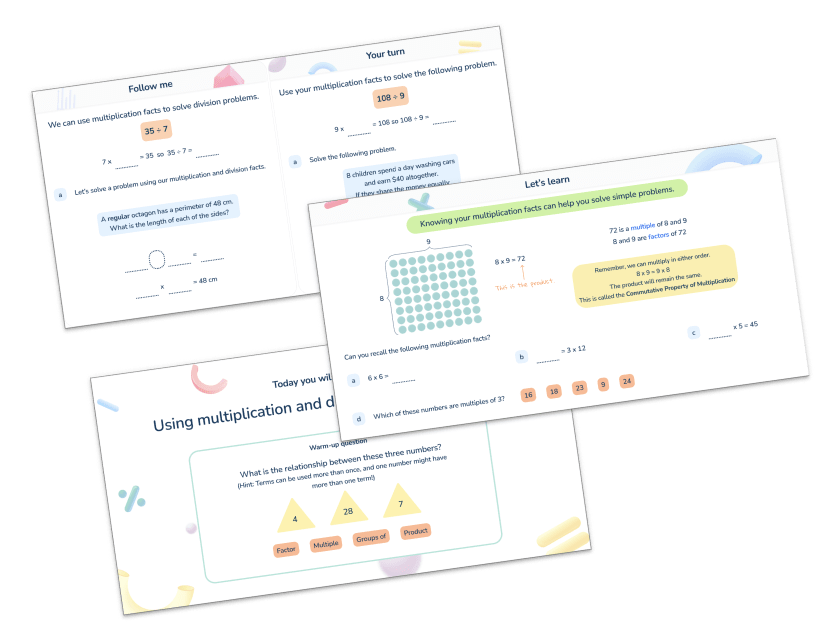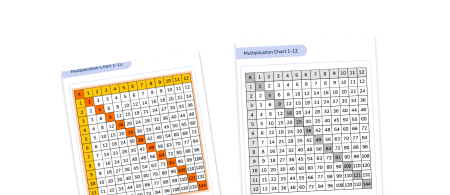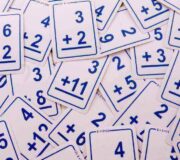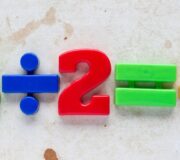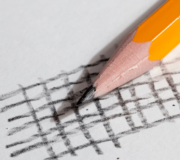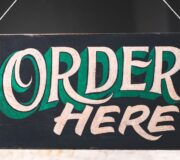How To Teach Multiplication Facts So Students Learn Instant Recall
Teaching multiplication facts well and routinely so that your students have instant recall of their facts is an annual challenge for every elementary school teacher.
Without knowing the multiplication facts as we know, many future math topics will be more difficult for your students.
This article combines the classroom experience of Pete Richardson, who’s been teaching multiplication facts from kindergarten right up to 5th grade for many years now, as well as Third Space’s own expertise in developing strategies to support learners one on one in math.
Why do we teach children multiplication facts in elementary school?
Sometimes we have to go back to basics to remember the reason we’re teaching something.
There are three reasons we need children to prioritize their multiplication facts skills at elementary school.
1. Multiplication facts are fundamental to many math topics
Without a solid understanding of the multiplication facts, children will struggle when they start to tackle division, fractions and problems with larger numbers.
Multiplication facts need to be embedded by third grade and are also central to 4th grade and 5th grades. In middle and high school, the needs become even greater.
2. Freeing up working memory allows students to develop their reasoning skills
There are certain mental math facts and operations children need to be able to carry out quickly and with a degree of automaticity in order to free up their working memory for newer, more challenging tasks at hand.
If we can ensure the transition of multiplication facts to children’s long-term memory and they can become an instantly recallable fact, the working memory can be freed up for reasoning.
All children need to go through these cognitive steps in order to achieve this. Some will only need a light touch while some will need significantly longer on particular points.
Multiplication Chart 1-12 Additional Resource
Download this multiplication chart showing the times tables from 1 – 12. Helps your pupils to learn their times tables.
Download Free Now!Teaching times multiplication facts facts first
Children need to learn and understand how multiplication facts work before they start learning and memorizing them.
1. Repeated addition
4 x 5 is the same as 5 + 5 + 5 + 5.
Children need experience of using concrete math manipulatives such as counters or multilink cubes and pictorial representations of objects, forming arrays.
Read more on the importance of concrete representational abstract here, and how to use it.
2. Multiplication is commutative
4 x 5 is the same as 5 x 4.

Children build on their existing understanding using arrays, turning the arrays around to show that you now have 5 groups of 4 and they will still total 20. This can then be linked to recalling multiplication facts, i.e. if they know their 5 times table as facts but not their 4 times table, they can use 4 x 5 to work out 5 x 4. This link needs to be made explicit.
3. Multiplication is the inverse of division
20 ÷ 5 = 4 can be worked out because 5 x 4 = 20.
Again, the use of arrays is key. Children need experience of pulling arrays apart into groups or sharing. After basic experience has been gained, the children should start to ‘see’ an array structure as 5 groups of 4 equal 20, and 20 can be split into 5 groups of 4.
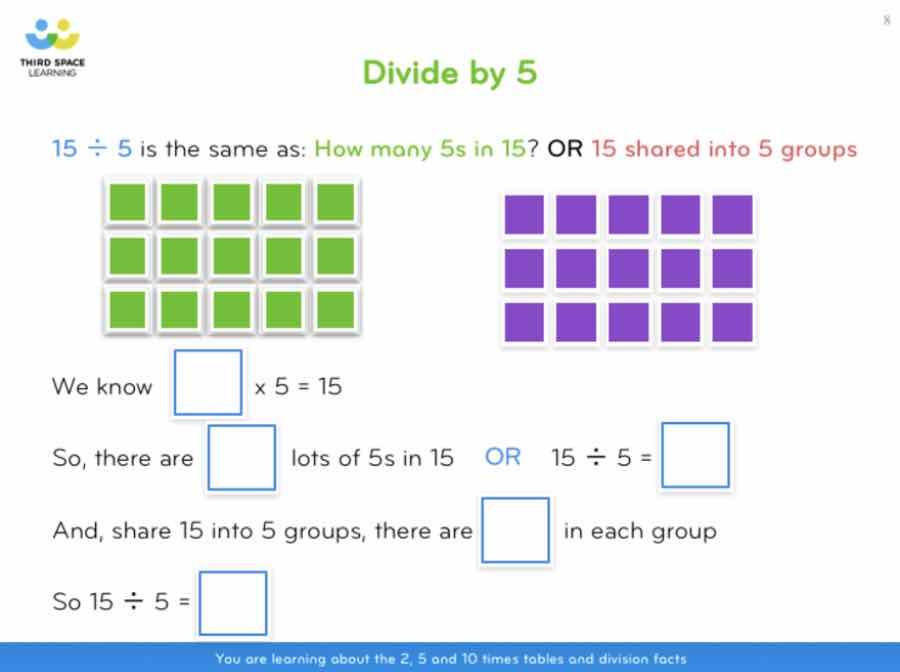
4. Number families
4 x 5 = 20, 5 x 4 = 20, 20 ÷ 5 = 4, 20 ÷ 4 = 5
Due to their commutative understanding, by now children should also be able to see whole number families. For many children, this will need to be pointed out and discussed. Most children will be able to explore this in its abstract form but if in doubt, go back to arrays.
From here it is only a short jump to understanding that any missing number can be worked out through knowledge of number families, e.g. 4 x [ ] = 20 or [ ] ÷ 4 = 5. There are other methods children can use to work out missing numbers, but our goal is to increase working memory in order to increase instant recall from long-term memory. Being able to bounce around a number family will achieve that.

Meet Skye, the voice-based AI tutor making math success possible for every student.
Built by teachers and math experts, Skye uses the same pedagogy, curriculum and lesson structure as our traditional tutoring.
But, with more flexibility and a low cost, schools can scale online math tutoring to support every student who needs it.
Find out more1,2,3… Counting is the key to multiplication facts practice in K-6
Counting will start before beginning to develop understanding and reasoning, but will continue long after until all multiplication facts can be recalled sequentially at speed.
Start by counting concrete items
Ensure skip counting in 2s begins with concrete manipulatives such as shoes, socks, hands, etc before moving on to using counters or other manipulatives. Whenever starting children to count in a new amount, such as counting in 8s, children should be given the opportunity to see visually what that looks like to reinforce that 4 x 8 looks quite big compared to 4 x 6. They can then look for patterns such as 4 x 8 is the same as 4 x 4, doubled.
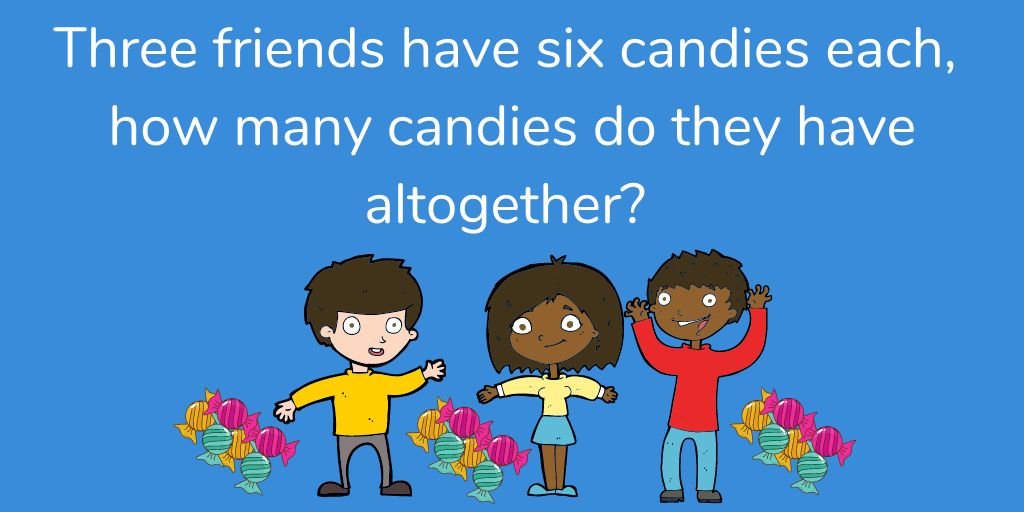
Don’t be afraid of drilling the multiplication facts
Some drilling is inevitable when developing counting, initially alongside concrete and pictorial manipulatives but quickly moving to chanting ‘3 times 7 is 21, 4 times 7 is 28’ etc.
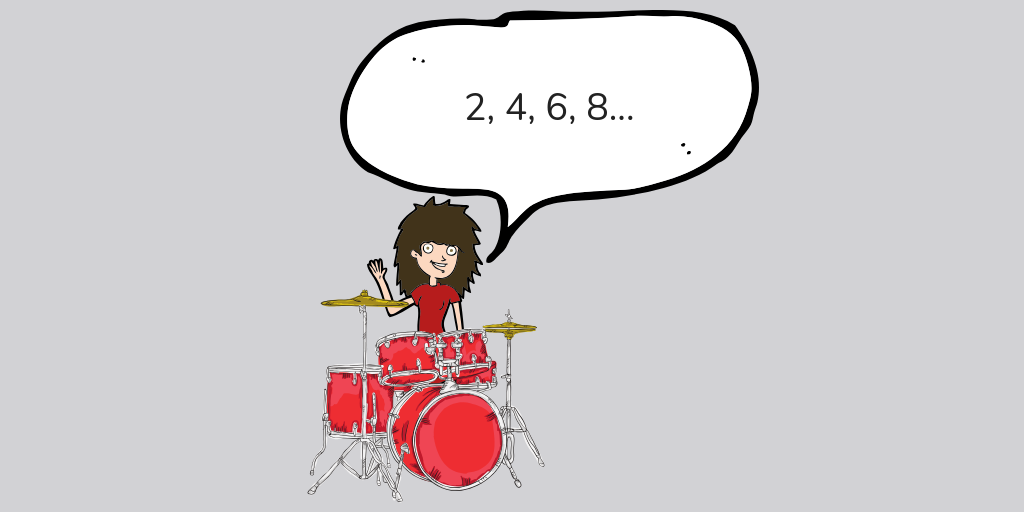
Children should by now be used to representing numbers in different ways, for example, a counter could represent 1, 2, 5, or 10. Once children are secure with this, fingers can be used to count quickly on any multiplication table.
What about the 11 x and 12 x? Get children to make two fists and begin at 11 x with one finger up, two fingers up for 12 x, supported by their place value understanding.
Display multiplication facts around your school
Counting sequences should be highly visible everywhere!
• If you have steps, have a student artist paint ‘6, 12, 18…’ on each step in a mural style.
• Have some appropriate sequences visible in your hall, and rather than entering and exiting assemblies in silence, replace them with chanting.
• Set up year group counting sequences linked to the times table expectations in each classroom.
• Use the hopscotch grid in the playground to make math fun.
• It’s a good idea to include counting sequences linked to your state or school curriculum for counting – this is different from recall of multiplication facts expectations. For example, by the end of 2nd grade, students are expected to count by 5s, 10s and 100s up to 1,000.
Don’t forget to keep the previous year’s sequences up too, to support those that need more time to consolidate counting sequences.
Deeper understanding of multiplication facts
For children with small working memories, frequently children with special educational needs, being able to count quickly and accurately will give them an appropriate alternative to instant recall, as long as it is underpinned with reasoning and understanding.
However, these children can often struggle to convert the ability to count rapidly into being able to instantly recall facts. By working on children’s deeper understanding of what multiplication is, how it is related to division, and number families you should be able to address this.
How to teach instant recall across all multiplication facts
Not all children will need the suggested structure below, however, it will help those who struggle to convert quick counting into instantly recallable facts.
The example is for the 6 times table but the principle can be applied to any.
Teaching 6 Times Table step by step
- Start with 1 x 6, 2 x 6, 5 x 6, 10 x 6 first. This will build upon their most secure existing table facts.
- Add in 3 x 6, 4 x 6 when step 1 is frequently recalled correctly and instantly.
- Build up with 6 x 6, 7 x 6, 8 x 6.
- When looking at 9 x 6, 11 x 6 and 12 x 6, children should look at finding 10 x 6 and adjust.
- Be guided to remember what the last 2 numbers were in the sequence they learned (66, 72).
- Add in related division facts. For some children, this step can be integrated from step 1 onwards. For others, they will need time to develop recall of multiplication facts first before adding this in.
When giving children quick fire questions to recall, particularly in the early stages of each multiplication table, ensure they are given the opportunity to see the calculation rather than just hear it orally.
Children should be encouraged to quickly count using their fingers to assist them with prompt questions such as, “6 x 7, we did that a minute ago, can you remember what it was?”
Using technology for fact recall
Fact recall is the perfect opportunity to involve educational technology as there is little more value a teaching assistant or teacher can give other than asking the fact recall questions.
Traditionally, these packages support those who are quick to pick up tables to pick them up even quicker, while having limited impact on those who struggle.
However, this pattern is changing and there are innovative packages out there that will support all learners.
When picking which technology package your school should use, ask yourself the following questions:
- What added value will this give compared to traditional fact practice?
- Will the package support children who are not yet secure at counting?
- Will the package allow me to adapt what is set to match each child’s needs?
- Is the package accessible at home and from all types of devices?
Achieving the goal of instant multiplication facts recall
Putting the above steps in place and creating a focus on recall throughout your school will minimize the number of children entering 5th grade without a secure grounding of recalling their multiplication facts. There are 2 additional steps that will take this to the next level which I’ve detailed below.
Learning multiplication facts at home
Counting and developing recall facts for multiplication tables is an essential ‘little and often’ part of homework, along the same lines schools expect with reading. Your child’s teacher probably expects them to read a certain amount of minutes a week, and we should think of math facts the same way.
Research says at an elementary age, it is this kind of homework that has the potential to make the most difference. Engage parents and inform them of the steps you’re using; this article on the best way to learn multiplication facts at home has been designed to send home to parents.
Additional support for those who struggle with recall
Even with all the above in place, a (much smaller) percentage of children will still struggle to recall multiplication facts. For those with special education needs inhibiting working and long-term memory, counting at speed is a realistic point at which to switch focus to other areas of need within Mathematics.
For other struggling learners, try giving them additional time outside English and Math lessons to practice counting at a reasonable speed and to push an increasing number of quick-fire questions and answers towards long-term memory.
In many cases, this can be achieved as a frequent morning activity or during assemblies. A Teaching Assistant can support, or if the right technology package is chosen, simply giving them more time to access could be all that is required.
For children who are really having difficulty, nothing beats sitting down and going through them 1-on-1. This isn’t always possible in a busy class of students but with Third Space Learning’s AI math tutoring, all students are able to benefit from unlimited, personalized, one-to-one math support at an affordable cost.
10 fun tips for teaching multiplication facts effectively
Here are some fun ways to help students master their multiplication facts:
1. Use multiplication facts chanting
Memorizing multiplication facts via flashcards is not the only way to learn them. Chanting is also a simple yet effective way to drill multiplication knowledge into your students. It may not be the most glamorous and exciting way of teaching multiplication facts, but it is a great place to start!
2. Make multiplication facts fun with songs and multiplication games
Our favorite multiplication facts song is Schoolhouse Rock’s ‘3 Is A Magic Number’ and we’ve got lots of fun multiplication games in this blog post.
3. Make use of multiplication charts
It might be a simple technique, but it is one that works! Hand out a multiplication chart to your class and get them to fill them in. Not only will they enjoy the challenge of filling in a multiplication chart but it will encourage them to practice, practice, practice!
4. Use concrete resources
It doesn’t matter whether it is pasta, counters or even coins, just having concrete resources to help students work out multiplication facts can be massively beneficial.
5. Get active outside the classroom
Our multiplication facts pavement chalk activity above is just one of the outdoor math ideas used to make multiplication facts learning more active and therefore memorable for your class.
6. Use students’ interests to engage them with multiplication facts
Use the various interests your class will have to help teach multiplication facts. One of our favorite examples of this are Mr. DeMaio’s songs using multiplication facts, where he covers popular pop songs using multiplication facts.
7. Use tricks that may be common knowledge to us, but will be revolutionary to young minds
You are well aware by now that you can do the 9 multiplication facts on your fingers, but your students may not be just yet!
8. Use quick-fire multiplication facts quizzes
While you shouldn’t make quizzes a regular feature, they can be a great way to help students get to grips with their multiplication facts. Got 5 minutes to spare when walking to swimming lessons? Get a quickfire multiplication facts quiz in. There is always an opportunity to fit a quick multiplication facts quiz around school.
9. Ask short division based questions
Simple division questions such as “55 divided by 11” and “30 divided by 3” can help students realize that multiplication facts and division are closely linked, and can be used together when trying to solve a math problem.
And finally…reward student efforts regardless of the answer
Nobody is perfect when they are just beginning to learn about something, and this is definitely the case when it comes to multiplication facts and students. Don’t be afraid to hand out praise when you see that a child has been working hard on their multiplication facts, even if they haven’t quite got the answer yet.
Do you have students who need extra support in math?
Skye—our AI math tutor built by experienced teachers—provides students with personalized one-on-one, spoken instruction that helps them master concepts, close skill gaps, and gain confidence.
Since 2013, we’ve delivered over 2 million hours of math lessons to more than 170,000 students, guiding them toward higher math achievement.
Discover how our AI math tutoring can boost student success, or see how our math programs can support your school’s goals:
– 3rd grade tutoring
– 4th grade tutoring
– 5th grade tutoring
– 6th grade tutoring
– 7th grade tutoring
– 8th grade tutoring
The content in this article was originally written by senior leader Pete Richardson and has since been revised and adapted for US schools by elementary math teacher Christi Kulesza.
